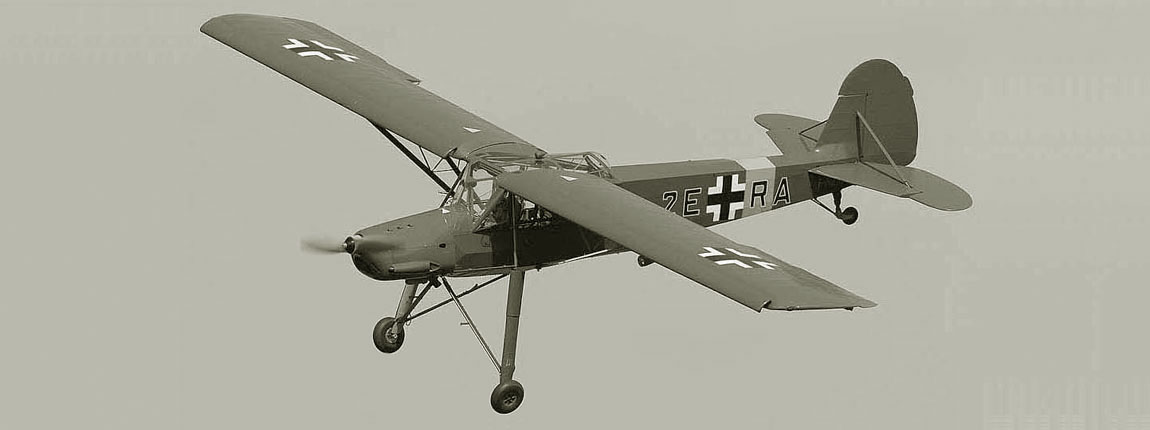
Aviation of World War II


 |
Aviation of World War II |


|
|
Soviet Union | Lend - Lease | Facts | Forum | Germany | Japan | R A F | U S A A F | Other | Photos | ||||||||||||||||||||||||||||||||||||
|
| ||||||||||||||||||||||||||||||||||||
Fi-156 "Storch"Liaison AircraftFieseler
The light rectangular fuselage had a frame made of steel pipes with linen sheathing. The two-spar wooden wing was covered with canvas, and the tail unit had plywood sheathing. An aluminum slat ran along the entire leading edge of the wing. The entire trailing edge of the wing was occupied by landing gear - the inner panel was a slotted flap, and the outer one was a statically balanced slotted aileron. "Storh" got its name from the characteristic landing gear with steel candle springs and oil dampers. The upper ends of the struts were attached to the lower point of the pyramidal struts along the sides of the fuselage. A tail support was used on the plane, although a tail wheel was installed at the end of the war on some "Shtorhs". The three-seater cockpit provided excellent visibility - the side panels of plexiglass glazing protruded above the fuselage at a steep angle. The upper central part of the wing, which made up the cockpit ceiling, was also covered with plexiglass, so that the Storch had no equal in all-round visibility. Fieseler Fi 156 was equipped with an 8-cylinder (inverted V) air-cooled Argus As 10C engine with a takeoff power of 240 hp at 2000 rpm and 200 hp. at 1800 rpm, rotating a wooden Schwarz propeller with a diameter of 2.60 m with a metal leading edge of the blades. The dry weight of the motor was 213 kg.
| ||||||||||||||||||||||||||||||||||||
|
|